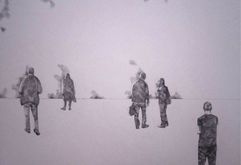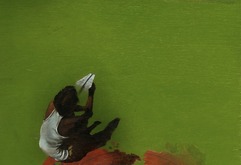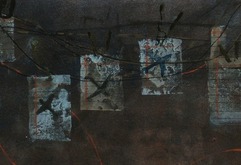A large group exhibition by students from top art schools in the Bay Area, California, addressing
pressing contemporary concerns and personal/political issues in a variety of forms and media.
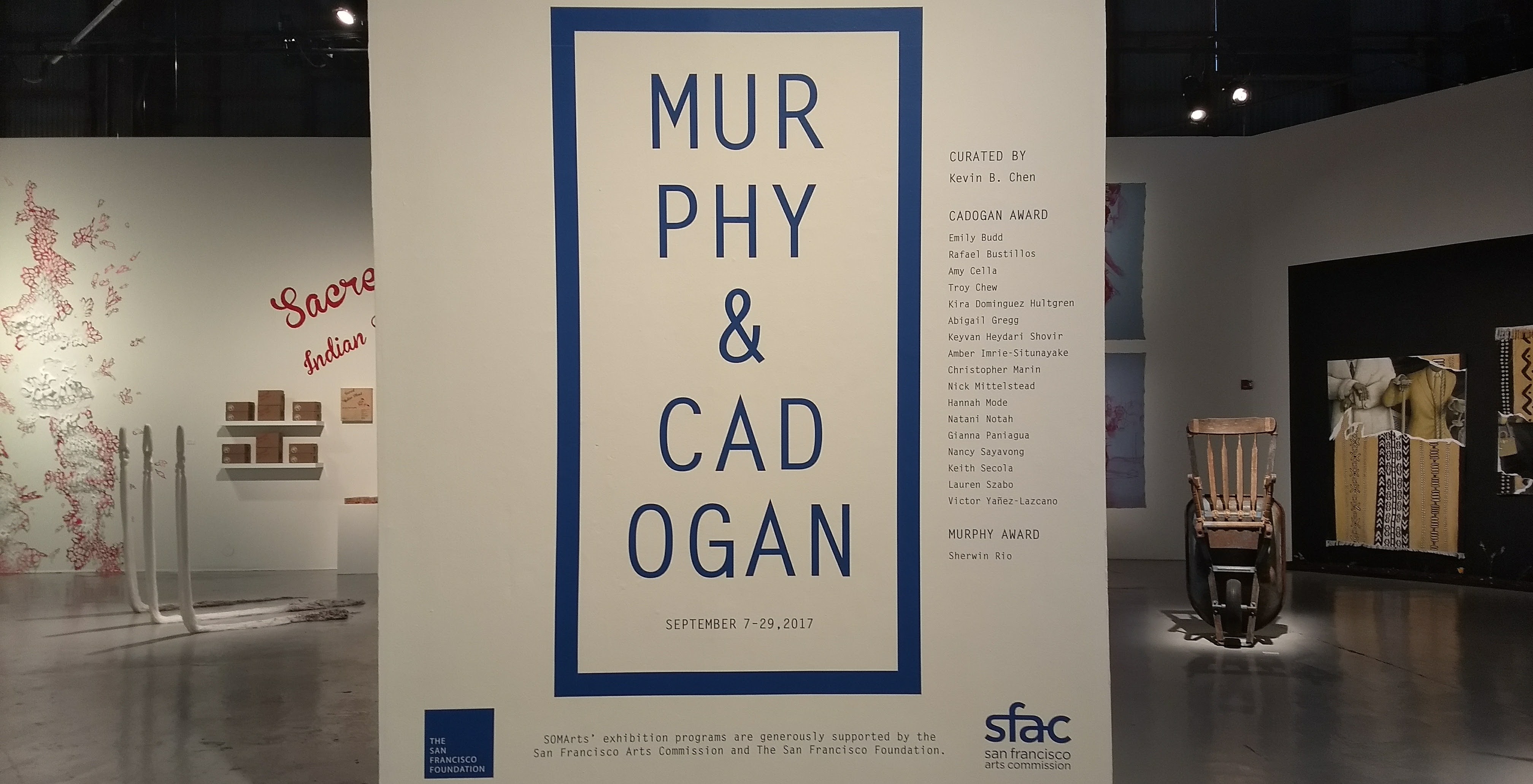
“The show is a celebration and a claim of what really makes America great, which is the diversity of the people that make it up, the diversity of cultures, the diversity of cultural backgrounds.” -- Kevin Chen

The exhibition displayed the works of 18 Master of Fine Art students 1. They were awarded funds toward their tuition or towards their careers as artists. The gallery showcased what is considered the best work of the upcoming MFA class.
A panel of three jurors, Lizetta LaFal Collins, Maria Ester Fernandez, and Kevin Chen, selected the artists from a pool of applicants going into the last year of their program at one of the six eligible local colleges and universities 2. The panel collectively chose the award recipients last summer and informed them in late July. As “there was no quota for painters or schools,” award recipients were chosen purely on merit.
Curator, Kevin Chen, then met with artists individually. With a background in the artists’ previous work, he collaborated with them to fill the gallery. Given the space with 45 foot ceilings and 16 foot walls, this was no easy feat. At that time, artists had a little over a month to fill one of the largest galleries in San Francisco.
The Murphy and Cadogan Awards were established in 1986. The donors--Edwin Anthony and Adalaine Bourdeaux--artists themselves, had struggled financially and understand the difference the award money can make for young artists.
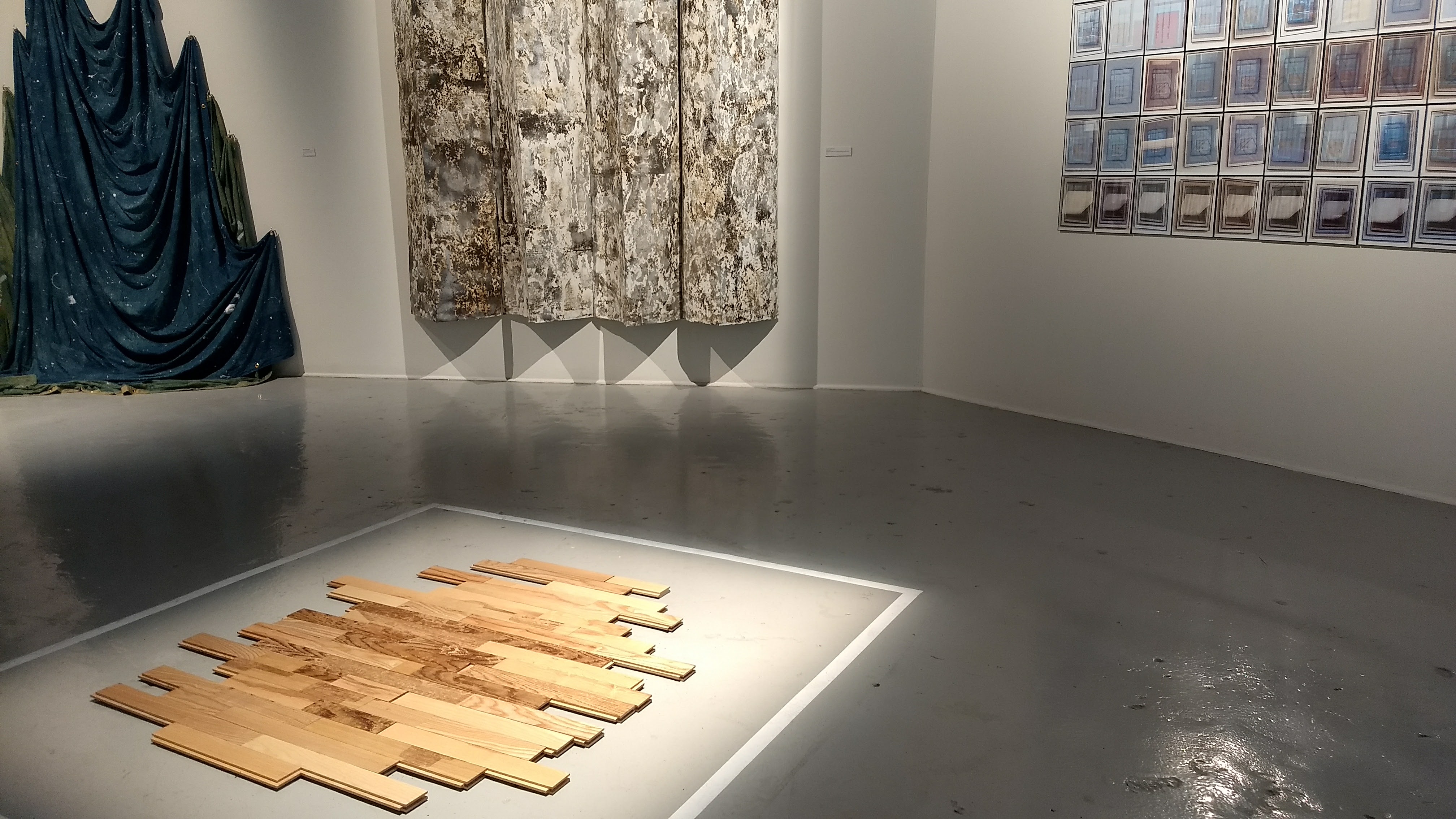
Beyond the repayment of educational debts and providing funds for supplies, the awards give the MFA students a “chance to exhibit their art as any artist doing a gallery showing would. The idea is to give them a chance to experience what it is actually like." 3 Students get exposure for their work and an understanding of gallery showings as a professional artist.
This show is particularly unique because it features the work of promising artists who are attending MFA programs in the Bay Area and seeks to create common threads among creative minds. The exhibition comes together through three separate themes: commentary on the state of humanity, consumerism in the United States, and a deteriorating environment to support human needs.

Upon entering the gallery, to the left, there is an analysis of the culture of money and consumerism. One such project, "Comes and Goes (Cloud Bank)", created by Lauren Jade Szabo 4, showcases aerial advertising of the word “money". She had originally created the large canvas displaying the text across clouds, but was “encouraged to start thinking about extending the composition past the frame of the canvas onto the wall, to do an actual mural on the wall.” 5 The gallery’s high ceilings and expansive walls caused her to create an even more impactful result. Problems of greed and the American consumerist culture that are overlooked on a day-to-day basis are imposingly displayed, conspicuous and unavoidable. Szabo emboldens her viewers to question society’s priorities in the age of technology. An advertisement such as this is full of false promise. More money is seen invariably as a solution but not as the problem.
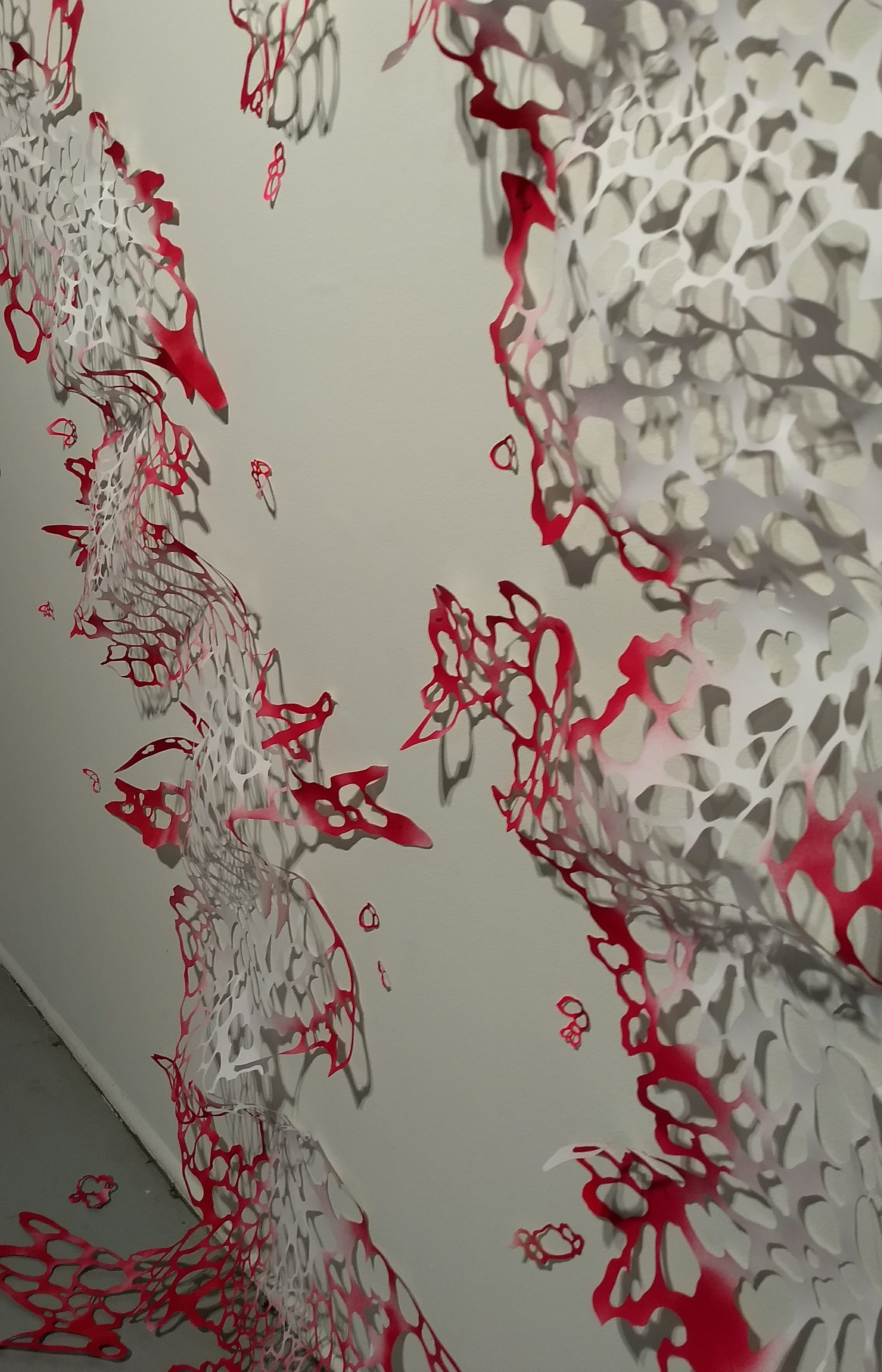
Moving into the center of the gallery, the focus is on the state of humanity and human beings. Gianna Paniagua did a paper-cutting called "Force". The piece explores the juxtaposition between weakness and strength, in paper as in human bodies. Paniagua is a heart transplant recipient. The four times this year that her body has rejected the transplant have inspired her to explore this concept that she expands to a larger understanding of growth and decay. Her path as an artist was inspired by this relationship with her body. During treatment, she created a towering piece of cutouts resembling cells with reddened edges. There is strength in their numbers and repetitive pattern, but fragility in their decay and uniqueness. Her own cells rejected the distinctly different transplanted cells. Gianna portrays strength through her recoveries and artwork, where society may traditionally perceive fragility. She urges her audience to understand their relationships with their own bodies and understand where their strength lies.
As the viewer reaches the right side of the massive open gallery space, there are pieces illustrating the lack of human concern for the environment. With her canvases, "Cacophonous Float" and "Stretch", Abbey Gregg challenges the viewer to look into past, present, and future environmental effects of humans in the age of technology.
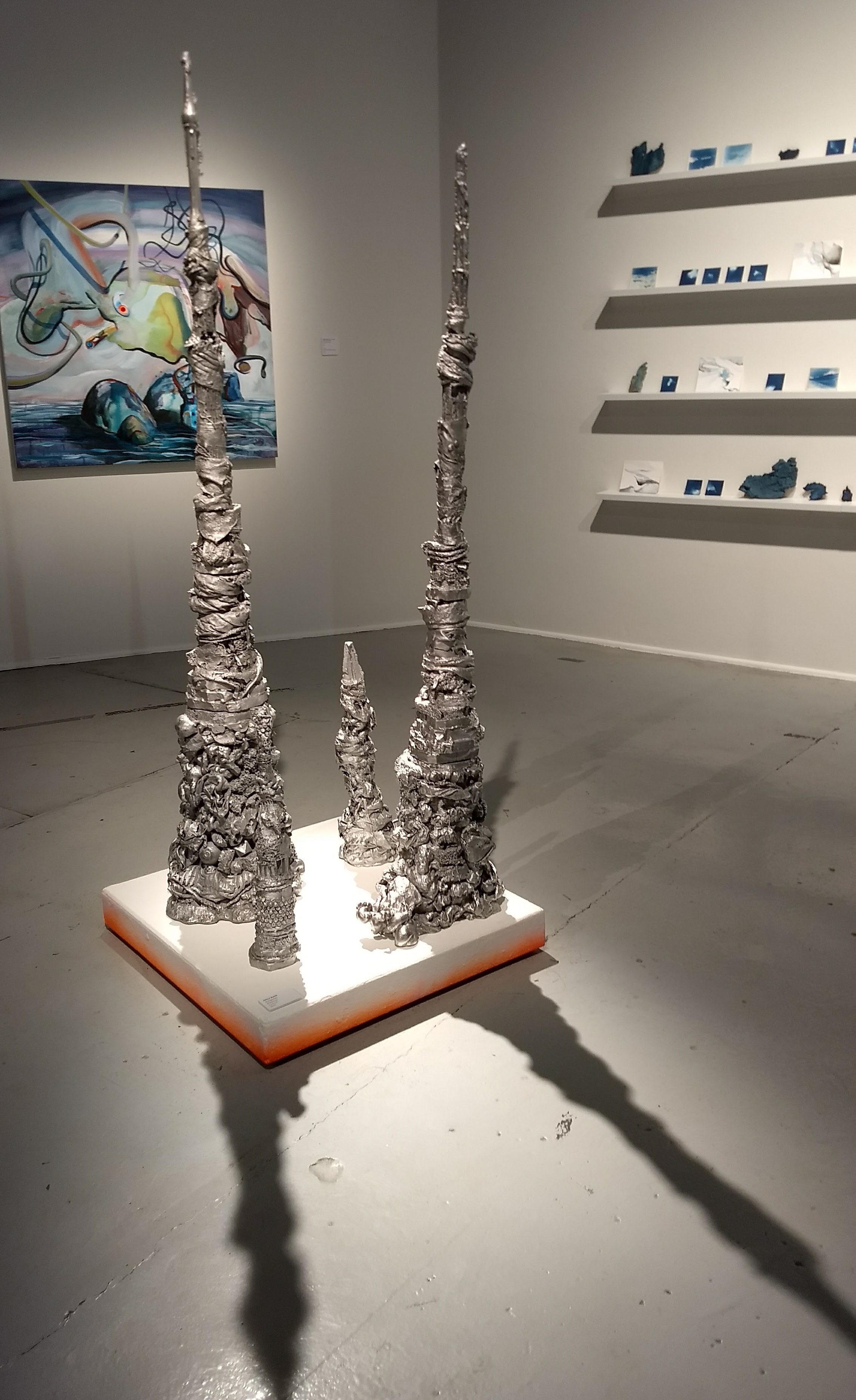
She contrasts the feedback loop of human life causing environmental depletion, and the resulting human casualties, alongside landscape painting with a technological lens. “It’s very eerie how relevant those are today, in the wake of all the hurricanes in the south. You can see the rising water level of the sea. Nature will always adapt; it’s just a matter of how humanity will adapt.” 6 There is a clear pattern of nature’s ability to consistently subsist, but there is need for humanity to adapt to those changing conditions.
This show encompasses “what really makes America great; that is the beauty in the diversity." Natani Notah’s and Kira Dominguez Hultren’s pieces boldly celebrate their roots within a society that conforms in appearance. Nick Mittelstead and Raphael Bustillos “elevate mundane materials to the status of art.” Sherwin Rio’s three pieces, born from his Philipino background and growing up in the United States, “are simple and so poetic that you can read many different story-lines into them.” 7 The SOMArts gallery hosts this amalgamation of different stories, strifes, interests, backgrounds, and passions. And yet, commonalities in analysis and thought can be found. The audience is continuously drawn into questioning their relationships with society, themselves, and the larger world around them.
NOTES:
1 ARTISTS: EMILY BUDD, Rafael Bustillos, Amy Cella, Troy Chew, Abby Gregg, Kira Dominguez Hultren, Chris Marin, Nick Mittelstead, Hannah Perrine Mode, Natani Notah, Gianna Paniagua, Sherwin Rio (Murphy Award), Nancy Sayavong, Keith Secola, Keyvan Heydari Shovir, Amber Imrie-Situnayake, Lauren Szabo, and Victor Yañez-Lazcano.
2 Art schools: California College of the Arts, Mills College, San Francisco Art Institute, San Francisco State University, Stanford University, and University of California, Berkeley
3 Interview with Kevin Chen
4 http://www.laurenjadeszabo.com/
5 Interview with Kevin Chen
6 Interview with Kevin Chen
7 Interview with Kevin Chen
http://www.somarts.org/wp-content/uploads/MC-Info-Packet.pdf
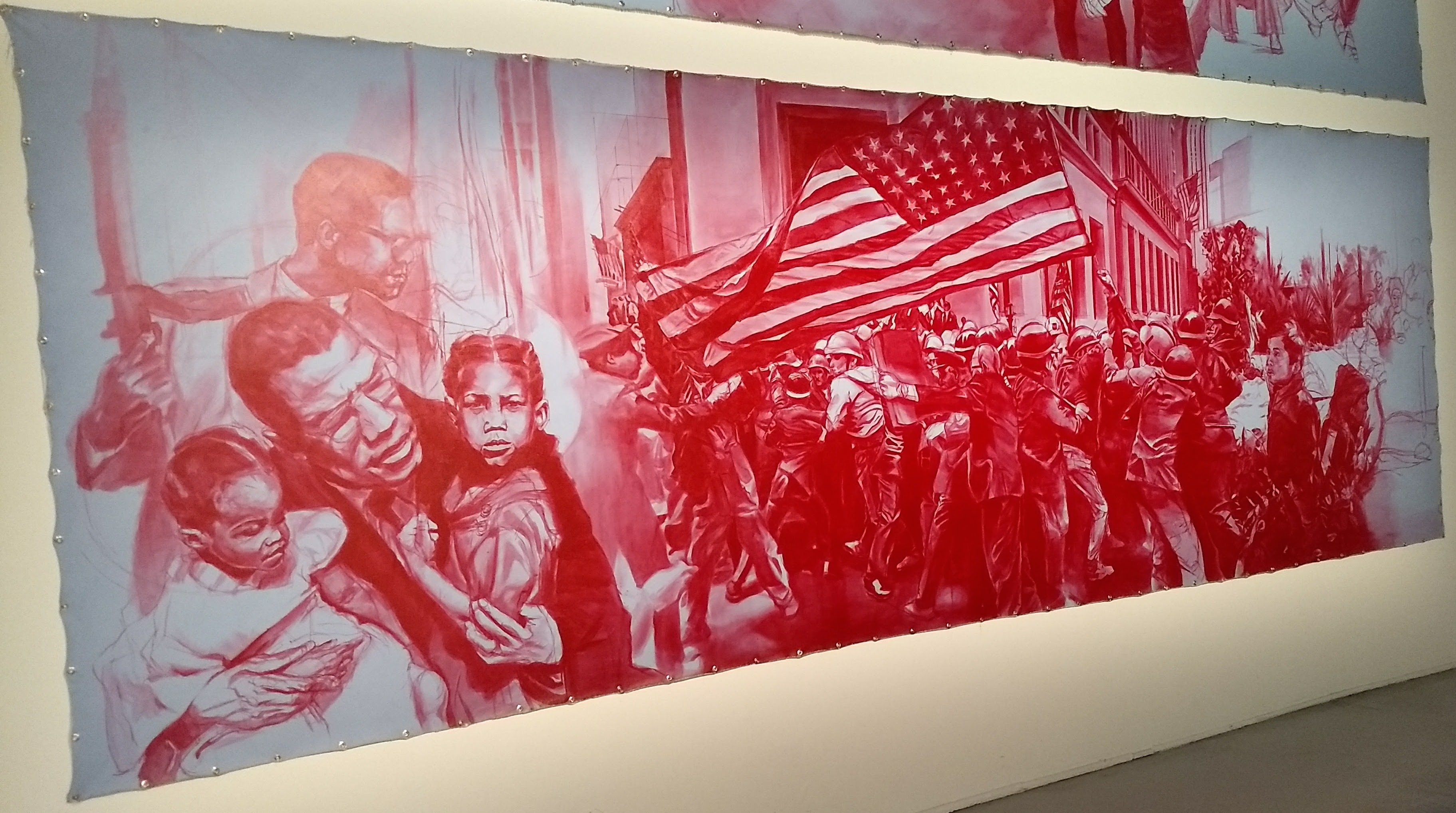
Archive
n. A repository or collection of information, historical documents or records providing information about a place, institution, or group of people.
v. To place or store; to keep.
The word archive, especially as a verb in the English language, can be read as the intent of art practices spanning various media, contexts and movements. As the meaning of the word is distilled to its crux – to keep – it becomes general and yet all the more powerful.
As I initially noticed (and was often pointed out by others) the tendency to archive within my practice, each connotation of the word archive itself became points of departure. From the instantaneous visual in our minds of an old dusty filing cabinet to shelves of film rolls and photographs on one hand, to the act of putting pen to paper or the click of a camera shutter, the meaning of the word began to oscillate between noun and verb.
The degree to which culture and its relationship with colonialism and/or migration being discussed through this building bridges platform has actually really caught me off-guard. Though I do know that in one way or another, a group of 14 culturally diverse artists (assuming ofcourse that those of us from India are still acutely diverse in background) are bound to have gotten here, it’s still interesting to see that gap being bridged through shared histories.
In lieu of these discussions, I have been thinking about my project for January through a similar lens. I would love to open up my project to all the artists, asking those of them who would want, to talk to me about one aspect of their culture which they would use to draw a parallel between the natural world and myths/folklore. Extending my current practice to a space which is more about shared cultures than about knowledge, maybe the simultaneous histories that existed across such borders will be an interesting place to start.
I know I am narrowing it down to a great extent when I say mythical narratives regarding forces or aspects of nature and each artists own cultural backgrounds, but considering my current areas of research and the fact that our histories themselves are vast and often hard to pen down without complexity, I would like to see if the narrowing down might help for the first phase of such a project. Maybe some day I will be able to see it as more. 🙂
Over the past two years I have found some interesting parallels particularly between Indian, African and Greek legends, and I do think it would be an interesting way for me to get to know the cultural binaries of other artists without fixating on our present understandings of each other – instead looking at each of us as individuals who have so much more in common which we may not even be aware of about ourselves. In the little bit of time I have spent getting to know spaces and cultures that are foreign to me, the moments in which certain unexpected parallels were drawn were actually the most fascinating.
That being said, I am not sure of how this project will develop and am open to suggestions from any of you who could help me visualize it! I do think in one way or another it will be a series of narratives, but I am rather unsure of how it will pan out.
Thes logic of an archive is pushed further, acting as a canopy for various interconnected meanings and narratives – in turn breaking the system which an archive, database or museum would follow. Following a quasi-archival logic, the underscoring of such systems becomes an open-ended system of its own.
The archive – whether seen as a temperament, an impulse, a mode of control or an inherent need – holds within its cabinets and drawers’, moments from the past that have been strategically positioned; some hidden in plain sight and others neatly organized fragments, each with their own narrative.
We are confronted with relationships between archive and memory, archive and public information, archive and trauma, archive and ethnography, archive and identity, archive and time.
Looking forward to responses, and hoping to weave something together!

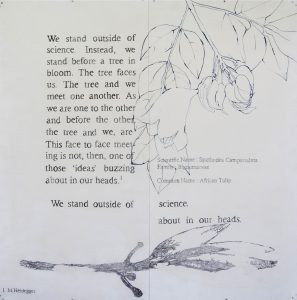
I'm (re)drawing my identity every day, again and again. With the knowledge I remember or I forgot, with the languages I know, with the smells of my memories, with the fears of my experience, with the sounds of the wind, with the noise of the streets, trough every word I read or write, trough every line I drow, trough every story I listen...
But before all else, I'm drawing my identity through 'Home'. Home not just like a place, not just like a house, but more like tradition, or collective memory... like the tradition of Other I meet, Homes of Other I visit. The feeling of being Home everywhere, and at the same time feeling desolate. And all the time feeling like in between. Searching. Winding. Alone, but with the Other, together. What a big oxymoron.
Again, and again.
(You can check more about the project 'Pink Gettho', installation 'The Blue Toilet' here:
https://vimeo.com/209651994
https://emergentartspace.org/forum/48036/
http://runevska.portfoliobox.net/bluetoilet

Hello, this post concerns on the project I've been working on for the last 2 years, which has been constantly evolving media-wise.
"Frágil" is a material research based project. Looking into the simbolic and real possibilities of obsidian stones.
Obsidian has been used around the world with different pourposes from making sacrifical daggers, to mirrors, used today for artesanal crafts as well as for psicological therapy and ceremonial magick.
Black mirrors being the sacred item of mexica god Tezcatlipoca, which he used as a dimensional portal to look into other times and kill his enemies.
Black mirrors now are used in the same manner by both new age practices and ceremonial magick, to dwell into the inner self and to evoke entities into this plane.
Several actions I did manifest as ways to create fractures in a black mirror as a way to liberate energy, a parallel between human body and black mirrors as contained energy as a portal.
I started the research with foucault's concept of heterotopy as the most basic explanation of if is a metaphor I love: an Heterotopy is that which we can see but is not real as our reflection in a mirror, it also refers to the imaginary construct of an urban space, that which seem very real to us like subcultures, I think structures in itself are something we must fracture, they become structures of violence, we must liberate this contained energy so it becomes useful.
Now I'm doing ephemeral sculptures and researching on the sound aspect of obsidian, as I had an experience with an instrument called apache's tear, this is something you put on your bellybutton as a "therapy" to disable energy blocks on the body. What I felt was a vibration going thru from my belly button to my arms, to my legs, to my head, to which I thought there must be another way for this vibration to be experienced without the direct contact. As another peculiar aspect of the stone, artesans who work with it first start cutting with a tecnique called "percusion" on which they tap it until they find the most high-pitched sound, that is where they can make a clean cut, in this peculiarity I think theres another metaphor for liberation, when things get high-pitched or intense (that's a saying in spanish), it is possible to change the way things are.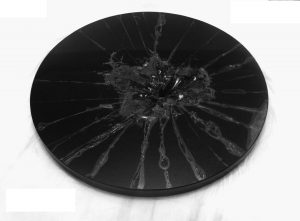
pw: gif

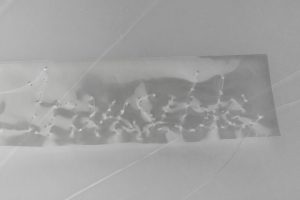
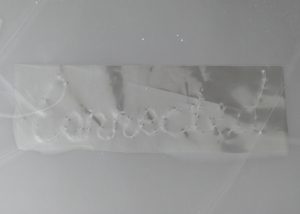
Here I have been playing with clear string and plastic to spell the words 'We are connected by invisible strings.'
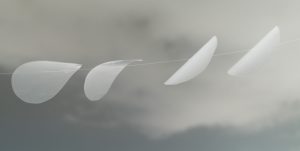

I was also experimenting with the idea of circular shapes and connecting them. I made this 3D version also. I like the idea of this as there is an inner and it expands outwards. This is made from paper macheing two different semi transparent papers and I used a little ink. The string is embedded into the piece so you can see it lightly through the transparent paper. I am considering trying to make something like this from resin and connecting them together.
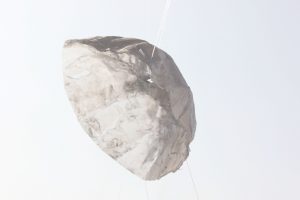

This post is related to my works on which I am working now, these works are on my private memories, which I have experienced and I wanted to recreate those moments, in my ways. there are many people to whom I want to say many things, but i don’t think I can, maybe I will may be not, but somehow working on this gives me some sort of satisfaction. at least I can share it with myself. I like to translate some of my experiences, sometimes I add somethings sometimes I don't. there are many truths I can not speak about, there are many untold stories, there are many things in my recent life which I cant share with anybody except one or two friends and many things are there which can not share with them also. my parents are not that open-minded, I cannot share with them or I am not that open-minded I don’t know , sometimes I thing I need to share with anybody, writing doesn't help me because of my vocabulary and not capable of choosing phrases ,sometimes i write in my diary , maybe I am afraid of speaking, may be i don’t know what to speak . most of the time I contradict myself. sexuality and gender, these two things confuse me a lot apart from my body complexes. sometimes my preferences confuse me, what am I?
I started reading a bit, watched films , talked to some and came up with the term gender fluid, now I think i am genderfluid and many other terms, before that, i never knew that term. Honestly, i don’t know may be i am not, sometimes i doubt everything, i don’t believe certain word or phrase can define somebody's emotions and it cannot be generalised. i feel i came with a sexual identity when i was born it is not constant it changes. And it will change . this whole process interests me, i am working on this series now these are some images.I am working on different medium, drawing, paintings, videos, gifs. these works are in mixed media and then editing in negatives. (invert) .
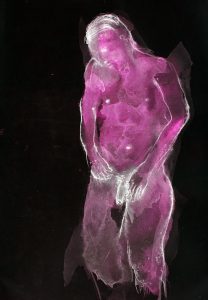
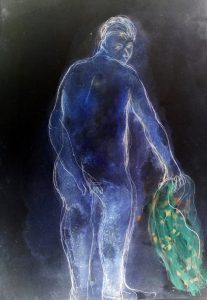
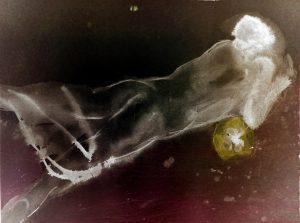
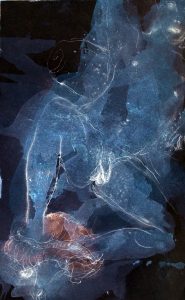
this is a link of one of my gif work "olympia and the rose" .
https://giphy.com/gifs/olympia-rose-gif-art-watercoulour-photograph-3ov9jLQmHLITeBVnO0?status=200
Completely disregarding the "single story" of history which tries to contain our memories and thought of our world. Having entirely no room for the "superiority VS inferiority" which again is one of the capitalist and consumerist cultures which have been imbedded into social structures.
i have become very weary of how the beneficiaries of the past are still trying in so many ways to exert their influence and show off their power through material gains.
Our outcry that we where never given time to construct our own narratives and to show the stories from our point of view. Liberals never afford us time nor the space to grieve.
Majority of countries which were affected by colonial rule haven't actually been totally left alone. The stigma of that period has been living throughout even for us the so called "Born Frees" as we are labelled in Republic South Africa were heavily influenced by this stigma.
Through racial slurs or perpetrated stereotypes, cultural appropriation we have in some way all seen in post colonial era resistance.
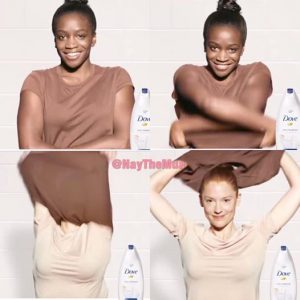 2017 advert.
2017 advert.
This kind of images are problematic and it has caused stir. Although the they company has come out to apologies. It show us that we haven fully recovered from our past, it also puts in question the role in which capitalism plays on society.
I live in a country that has no official name as of yet because we are at the Southern point of Africa. ( South Africa) what dose this say about the control?
Who is benefiting from this: "The Union of South Africa was formed on 31 May 1910 as a parliamentary union of the four self-governing British colonies: the Cape of Good Hope Province (Cape Province; previously Cape Colony), Natal Province (Natal Colony), the Orange Free State Province (Oranje Vrij Staat/Orange River Colony) and the Transvaal Province (Zuid Afrikaansche Republiek/Transvaal Colony). The Union came to an end in 1961with a new constitution and became the "Republic of South Africa".
(http://www.nationsonline.org/oneworld/historical_countrynames.htm)
I am interested in this because i now feel like these are the stigmas which are still left. How can i as a photographer conceptualise and challenge this ideas?
As new breed of artist how can our narratives change this and where do we begun to have alternative voices which aren't influenced by the norm and can give new meaning.
What is the role of the globalisation in this and how is it depriving the indigenous their right to express and realise their own identity?
How is subculture became a more prominent voice the the original cultures and traditions?
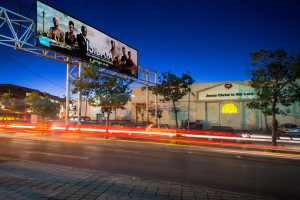

I wrote about "home as information" in my first post, and after viewing the comments and reading other artists' posts, I inspired that the concept of "home" can be expanded to broader terms. Instead of sorely emphasize the meaning of home to various people with different background, we rarely pay attention to the meaning of home to other sentient beings that share existence with us. In this term, the "home" can be translated to "habitat". How byproduct of human civilization such as pollution and war impact the nature, the home of other sentient beings. How capitalism changed the way animal lives and altered animal's home.

[The marine and the kitten, Korean War, 1952]
In responding to Nathi Khumalo who commented on my first post, capitalism plays a major role in segregation, either the separation of animal for consumption and entertainment or the segregation of people based on classes. Our "Home" changes in time due to the capitalism and the development of technology, another byproduct of the human civilization. For instance, wood has been commonly used as the material for dwellings before industrialization and replaced by concrete, steel, and glass that commonly used for constructing the modern dwellings. This change also provides residents easy access to high-speed internet and TV shows that dramatically changed people’s life pattern and culture. Night owl, for example, opposite to the natural biological clock we used to follow and altered our blueprints of "Home". In this case, the evolvement of "Home" is a mirror and can reflect the capitalism through different perspectives.

[Romain Jacquet- Lagrèze, Vertical Horizon 99 Hong Kong, 2015]
The worldwide migration, also a byproduct of the capitalism, raise controversial topics such as "self-identity" and "inevitable alienation" that I found in Tatjana Hendricx, Ashok Vish and Jasmina Runevska's posts. However, at the same time, it increased the cultural exchanges and impacted the design of “Home” in different cultures. For example, in New York city I can see many Asian architectures, and in San Diego and San Antonio I found the dwellings share lots similarities to Mexico dwellings.
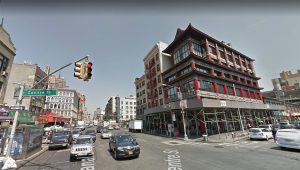
[Street view of NYC]
In my first post Kate Mcelroy commented about viewer participation in art and I think it is a great thing to consider when making art. Instead of use art as a statement of the artist, the more engaging way for the audience is unseat all the polarities in the art and leave the arguments and statements to audience.
As a film enthusiast since my younger years and with a background in filmmaking, I became fascinated early on about filmmakers considered as auteurs. Filmmakers whose work you could pinpoint as their own by simply seeing a single visual, a single scene or just hearing about the plot. Think Fassbinder, Burton, Wes Anderson, and the Dardenne brothers as a few examples. After probing further into this fascination, it always boiled down to the style of the films or the themes explored that awarded them with the distinction of being called an auteur. This got me thinking in depth about themes. “Themes are the fundamental and often universal ideas explored in a work, usually implied rather than explicitly stated. Deep thematic content is not required in a work, but the great majority of works have some kind of thematic content, not always intended by the author.”
Of course, I don’t mean to selectively talk about just filmmakers, as this is just as fascinating to me with respect to all kinds of artists producing work. Let me broaden the perspectives on this through some questions. How does an artist choose particular individuals as friends? Why does an artist choose to work on a specific subject matter? What deeper ties or mutual concerns did the artist have with them? How did the chosen friends or subjects fit with the artist’s personality? Why do certain themes attract the artist so persistently? Why was the artist more open to influence by certain sources rather than others? Why is an artist more touched or inspired by one issue over the other?
Such questions race through my mind when I consider my own work or when I see other artists’ work. Again, I pose these as questions rather than realized statements (just like in my first blog post) because to me the answers to such questions are not carved in stone. To find answers to these and other questions, immersion in biological material is key. Such material can be found from the earliest years of the artist’s life, or from their tumultuous or happy teenage years or during any stage (really) throughout their lives. Whatever one can learn about the artist’s immediate family, especially the environment of childhood and youth, the artist’s circle of friends or lack thereof - any physical, emotional, and cultural influences could ideally give us a glimpse into the themes that they consciously or subconsciously keep exploring in their work.
I have attached a few images (from my films+videos) of mine that deal with children or minors less than eighteen years of age. It was only until recently that a mentor of mine pointed out that most of my work has involved issues related to children or teenagers. It had never occurred to me on my own. After I was made aware of this, the concept of themes became heightened in my mind, which is why I decided to create this blog post. I would like to believe that an artist’s unconscious fantasies are at the heart of his/her body of works and constitute the core of the artist’s thematic preoccupations.

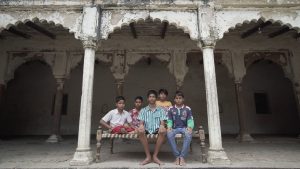
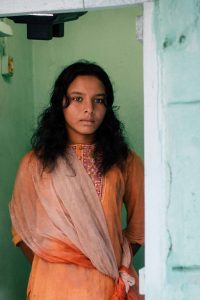
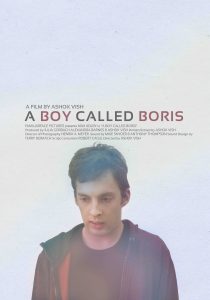
Contemporary art is increasingly subsumed under the realm of representation. Since conceptual artists were the first to consider their practice in terms of the transfer of information, a critical reconstruction of the conceptual root in contemporary art may shed some light on the conditions that determine artistic production.
In contemporary art ideas are presented by visual means that are themselves secondary to the idea. Contemporary art proclaims itself to be an art of mind rather than the sense. In contrast, traditional art sets out to have aesthetic value as part of it's artistic value. Generally, this way of thinking of contemporary art is in line with what many conceptual artists believe that
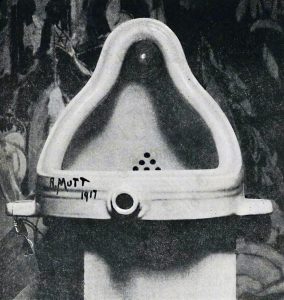 they are doing is revealing contemporary art as making a fundamental break with traditional conception of aesthetic value. But this does not disapprove the idea of aesthetic traditionalism. Contemporary art has aesthetic experience and properties through our imaginative engagement with the work of art. In the expression of Kosuth "the actual works of art are ideas"(lippard 1973).Idea itself is considered the medium of contemporary art. The term conceptual is applied so broadly that describing any art is no longer governed by a traditional medium.
they are doing is revealing contemporary art as making a fundamental break with traditional conception of aesthetic value. But this does not disapprove the idea of aesthetic traditionalism. Contemporary art has aesthetic experience and properties through our imaginative engagement with the work of art. In the expression of Kosuth "the actual works of art are ideas"(lippard 1973).Idea itself is considered the medium of contemporary art. The term conceptual is applied so broadly that describing any art is no longer governed by a traditional medium.
Can we trace a line from traditional to contemporary art?
Alexander Daniloff :
"I don't think we can say anything without falling into controversy, even me. I have a traditional view and prefer artworks that speak for the artist and the period. I cannot explain what contemporary art is, or atlas what it is mean to be. Yes, you can trace a line from traditional to contemporary art but not a straight one. Perhaps its is a parabola that goes up and then down, or a spiral. We do not know. With what we call contemporary art, words and explanations are always worth more.
Visual arts have been transformed by articles and critical essays; meanwhile the works themselves have become mute. In the theatre, the curator and critics have taken up the front rows. This is my view on the differences between contemporary and traditional art".
